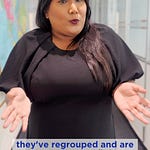It was celebrated as yet another Gen Z protest success. President Andry Rajoelina dissolved Madagascar’s government on Monday after five days of intense protests by the country’s Gen Zs.
But even with a new government on the cards, young Madagascans remain skeptical of him and are demanding real reforms.
It took five days of protests for Rajoelina to relent, announcing in a televised address to the nation that he had fired his government. By then, 22 people had died and many more were injured as a result of the violent crackdown on the protests.
When I reached out to protestors and activists across the Indian Ocean, I was surprised that they were not in a celebratory mood—even after the government was dissolved.
In fact, the protests still persisted, with protestors telling The Debrief Network that they did not trust Rajoelina, who has been in power since 2009.
“As long as President Andry Rajoelina is still in power, there will never be change. He says he wants to help the youth, but his actions show the opposite. If he really cared, he could stand with the people, without holding on to power,” a masked protestor who asked not to be named said.
Speaking virtually from Madagascar’s capital, Antananarivo, she asked to remain anonymous out of fear of reprisal amid the violent government crackdown on protestors.
So what took her out to the streets in the first place?
“The reason is very simple. We are facing a sad reality in our country. We can’t stay like this, doing nothing, with our arms crossed like the government. While people are dying, crying from famine, and slowly killing themselves, the government always finds excuses to act as if nothing has happened.”
The main chant heard in the protest all week has been: “We want to live, not survive.”
Madagascar, one of the poorest countries on earth, faces daily electricity outages of up to 12 hours and frequent water cuts. Last week, their woes intensified when the government announced further outages, sparking widespread rage. Only 36% of all Madagascans have access to electricity.
Madagascan Gen Z activist Candy Longin expressed skepticism about the president’s decision to dissolve the government. With a history of broken promises and a refusal to relinquish power, many see this move as yet another empty political gesture.
“Surviving to me means to be alive but not necessarily having basic human rights, not living with dignity. So living would mean being alive and having rights, being able to live comfortably in your country,” she said.
Longin no longer lives in Madagascar because life on the Indian Ocean island is far too hard.
“(Living) would probably mean to be able to live in my country without fear of times like these, with opportunities in my country and opportunities given to people, ordinary people like myself, and not necessarily just people being born into wealth. It also means having access to education and to jobs in my country,” she said.
Madagascar has experienced multiple uprisings since gaining independence in 1960, including widespread protests in 2009, which brought Rajoelina to power. Longin recalls that Rajoelina was once beloved by the people. She is hopeful that he might remember his roots and choose to do right by them.
Though the demonstrations started peacefully, they quickly escalated into violent clashes with security forces. According to the UN’s human rights chief, Volker Türk, the security forces used “unnecessary force” against protesters. At least 22 people were killed and more than 100 injured. One haunting video shows young people marching with the body of a slain compatriot.
Political analyst Njahira Gitahi explained to us that the protest in Madagascar represents something bigger: a global generation demanding dignity and being met with brutality instead.
“What we are witnessing is a collective effort by youth, not just in Africa, but globally. They are approaching activism differently than generations before them. We hope they continue learning about the history of state violence and how to organize against it. These movements need to go beyond symbolic change and push for real, lasting transformation with the formation of new governments and policies.”
A key feature of these Gen Z movements is their use of pop culture symbols. In Madagascar, as elsewhere, the One Piece pirate flag—the Jolly Roger of the Straw Hat Pirates—has become a symbol of resistance.
Created by Eiichiro Oda in 1997, One Piece is a manga about fighting injustice and chasing freedom. Its flag, now seen at protests worldwide, signals how Gen Z is reimagining what modern resistance looks like.
For the young protestors who spoke to us, this protest movement is far from over. They are not stopping until they see real change—whenever that may be.











